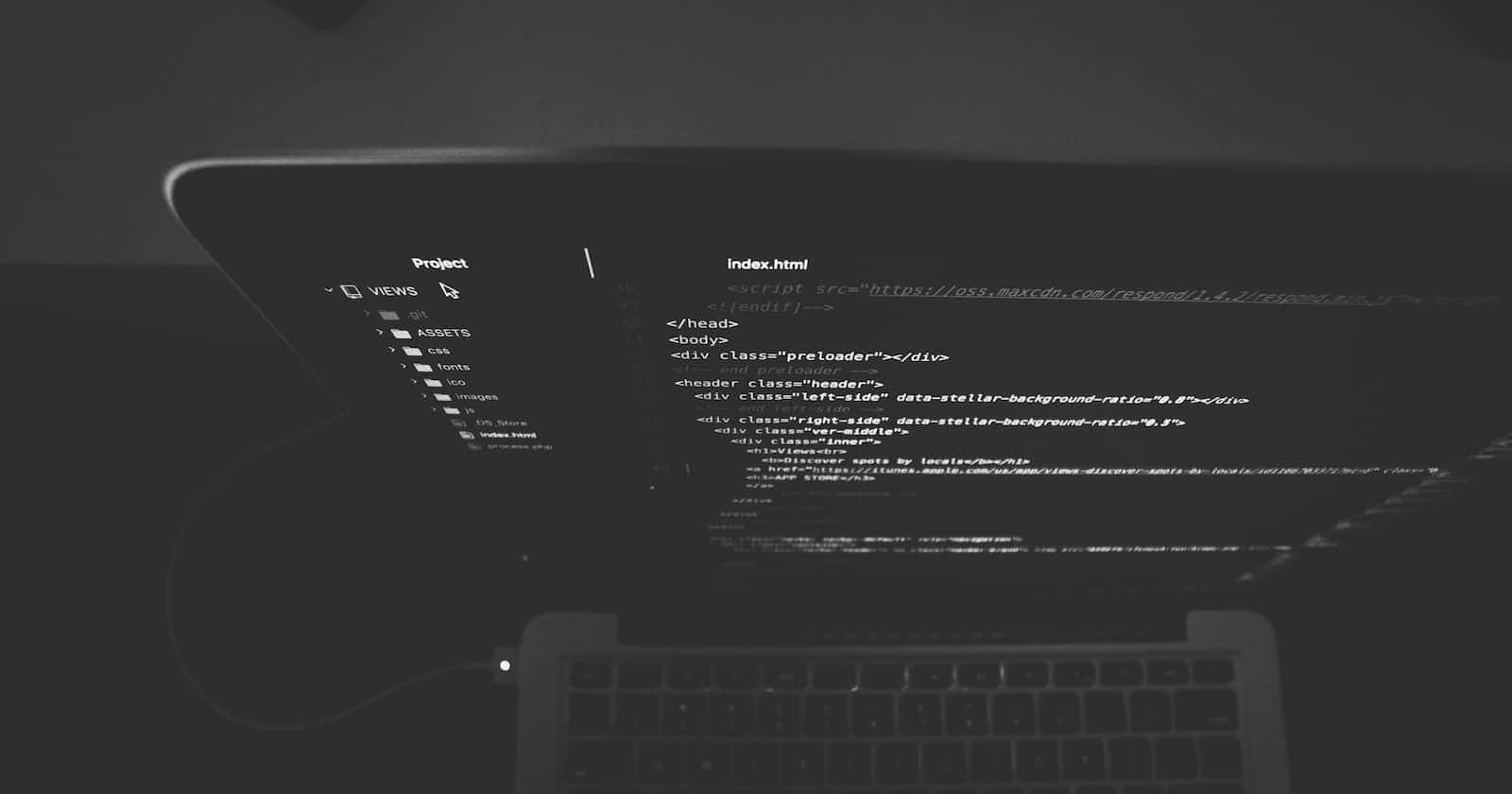
Photo by Nate Grant on Unsplash
💡Unlocking the Secrets: A Conversational Dive into JavaScript Variables
Table of contents
- 🤨 What is a variable?
- 👶 var, let, and const: The Cool Kids:
- 📊 Data Types: The Flavor of Your Variables:
- 🔁 Dynamic Typing: Shape-Shifting Variables
- ✍️ Naming Conventions: Be a Good Coder Citizen
- 🚨 Scope: Where Can I See My Variables?
- 🚡 Hoisting: The JavaScript Elevator
- 🧮 Arithmetic Operations: Math in JavaScript
- + Concatenation and Template Literals: String Fun
- 🧠 Be Mindful of Global Warming
- 💭 Final Thoughts
- ⛓️ References
Let's chat 💬 about JavaScript variables – those containers where you stash your data, like a digital backpack for your code.
🤨 What is a variable?
Variables are like boxes. You give each box a name (the variable name) and throw stuff (data) inside it. You can change what's inside the box whenever you want.
let myVariable = 'Hello, JavaScript!';
👶 var, let, and const: The Cool Kids:
There are three ways to declare variables: var, let, and const. var is like the old-school cool kid; let is the flexible and modern one, and const is the super disciplined, once-and-for-all type.
var oldSchool = 'I hang with ES5';
let modernKid = 'I love ES6';
const rockSolid = 'I never change';
🤔 What’s the difference between var let and const?
Use const when you want to declare a variable with a constant value. It is ideal for values that should not be reassigned. Once a const variable is assigned a value, it cannot be reassigned.
Use let when you want a variable that can be reassigned. It allows reassignment and is block-scoped.
let count = 0;
count = 1; // Reassignment is allowed
Historically, var is used for variable declaration, but it has been largely replaced by let and const. Unlike let and const, var is function-scoped, and it has some quirks with hoisting.
var name = "John";
In modern JavaScript, it's recommended to use let and const over var due to better scoping rules and predictability. const is preferred when you know the value should not be changed, while let is used when you expect the variable to be reassigned. Choosing the right one depends on the specific use case and your intention with the variable. 🎉
📊 Data Types: The Flavor of Your Variables:
Now, let's talk flavors 🎙️ – I mean, data types. JavaScript has a bunch, and they determine what kind of data you can stuff into your variable:
String - Good old text, wrapped in quotes (you can use single or double quotes) :
let singleQuotesString = 'Hey there!';
let doubleQuotesString = "Hey there!";
Number - Numeric values, no quotes needed:
let age = 25;
Boolean - True or false, the binary buddies:
let isFun = true;
Array - A collection of stuff, like a shopping list:
let fruits = ['apple', 'banana', 'orange'];
Object - A more sophisticated box, storing key-value pairs:
let person = {
name: 'John',
age: 30,
isStudent: false
};
Undefined - When a variable is declared but not assigned:
let mysteryVariable;
Null - Explicitly saying there's nothing inside:
let emptyBox = null;
🔁 Dynamic Typing: Shape-Shifting Variables
JavaScript is dynamically typed, meaning a variable can change its data type on the fly. It's like a shape-shifter!
let dynamicVariable = 'I am a string';
dynamicVariable = 42; // Now I'm a number!
✍️ Naming Conventions: Be a Good Coder Citizen
When naming your variables, be a good coder citizen. Use meaningful names, camelCase for readability, and avoid starting with numbers. It's like giving your variables a VIP pass.
let myFavoriteNumber = 42;
let userLoggedIn = true;
🚨 Scope: Where Can I See My Variables?
Scope is like the visibility cloak for your variables. If you declare a variable inside a function, it might not be seen outside. It's like a secret club.
function myFunction() {
let secretVariable = 'Shh, it\\'s a secret!';
console.log(secretVariable); // Can see it here
}
console.log(secretVariable); // Can't see it here
🚡 Hoisting: The JavaScript Elevator
JavaScript has this quirk called hoisting 🤔. Hoisting is a JavaScript behavior where variable and function declarations are moved to the top of their containing scope during the compilation phase. So, even if you use a variable before declaring it, javaScript is cool with it.
console.log(exampleVar); // undefined
var exampleVar = "I was hoisted!";
console.log(exampleVar); // "I was hoisted!"
hoistedFunction(); // "I'm a hoisted function!"
function hoistedFunction() {
console.log("I'm a hoisted function!");
}
🧮 Arithmetic Operations: Math in JavaScript
Variables love playing with numbers. You can use them in all sorts of math operations – addition, subtraction, multiplication, and division. It's like having a tiny calculator in your code.
let num1 = 10;
let num2 = 5;
let sum = num1 + num2;
let difference = num1 - num2;
let product = num1 * num2;
let quotient = num1 / num2;
+ Concatenation and Template Literals: String Fun
Strings are party animals. You can join them using concatenation or throw a wild template literals party.
let firstName = 'John';
let lastName = 'Doe';
let fullName = firstName + ' ' + lastName; // Concatenation
let betterFullName = `${firstName} ${lastName}`; // Template literals
🧠 Be Mindful of Global Warming
Lastly, be mindful of global warming – I mean, global variables. Too many of them, and your code might start sweating. Keep them local when you can.
// Not so cool
function globalWarming() {
globalVar = "I'm everywhere!";
}
// Cool
function stayingCool() {
let localVar = 'I keep it local!';
}
💭 Final Thoughts
So there you have it – a wild ride through JavaScript variables. They're the building blocks of your code, the containers of your data, and the MVPs of programming! 🚀
⛓️ References
On to go deep on this concepts? Check out this posts 👇
Var: https://developer.mozilla.org/en-US/docs/Web/JavaScript/Reference/Statements/var
Const: https://developer.mozilla.org/en-US/docs/Web/JavaScript/Reference/Statements/const
Let: https://developer.mozilla.org/en-US/docs/Web/JavaScript/Reference/Statements/let
Data types: https://developer.mozilla.org/en-US/docs/Web/JavaScript/Data_structures
Template Literals: https://developer.mozilla.org/en-US/docs/Web/JavaScript/Reference/Template_literals
